The “Good New Days” in a Non-Growing Economy
by Rob Dietz
Many people, as they begin to consider the problems with pursuing perpetual growth, ask with some trepidation what a non-growing economy (i.e., a steady state economy) would look like. Having lived life embedded in a growing economy, they find themselves fearful of a transition away from growth. This fear is primarily based on experience with failed growth economies – the social unrest associated with recessions and depressions. Such fear should not be taken lightly, but a steady state economy is not the bogeyman. Economist Peter Victor has shown through his modeling efforts that we can have a non-growing economy that achieves full employment, virtually eliminates poverty, reduces carbon dioxide emissions to sustainable levels, and avoids overwhelming debt. And we have a collection of intriguing policy ideas for creating a sustainable, fair and efficient economy. Knowledge of these ideas should go a long way toward putting the fears to rest.
A secondary bogus bogeyman, however, lurks in the shadows. Herman Daly has joked that some people believe a steady state economy is synonymous with starving in the dark under a harsh communist regime. But a steady state economy is not about deprivation, and it doesn’t require the planning of a Politburo. It’s not even about a return to the Good Old Days. It is, in fact, a progression to the Good New Days. An elementary description of life in a steady state economy should also help put aside fears and illustrate the desirability of pursuing enough instead of constantly chasing after more. The transition to a prosperous yet non-growing economy may prove to be a perilous passage, but the destination will be well worth the adversity.
The Scenario of a Steady State Economy
Imagine that we are a ten years down the road. In the intervening time leading up to today, social and economic snafus (e.g., unemployment, stock market downturns, banking crises, crime, and wildly fluctuating energy prices) have shaken people up pretty badly. Environmental miseries, such as continuing climate destabilization and agricultural failures, have awoken people to the consequences of unmindful economic growth. Culture began to adjust, and citizens demanded sweeping economic reforms and changes in how we interact within both local and global communities.
Waking Up in a Steady State Economy
You wake up refreshed, the way you’re supposed to feel in the morning after a restful sleep. With plenty of time before the day’s activities unfold, you begin the morning with a light exercise routine, stretching and moving your body to get the blood flowing. After a quick shower (with water pleasantly heated by your rooftop solar water heater), you head to the kitchen. You whip up a simple breakfast using tasty and fresh ingredients from the weekly delivery of food from the local farm. You make a mental note to mention to the farmer how much you enjoy her organically grown strawberries the next time you see her.
Besides enjoying your meal, you use your leisurely breakfast time to scroll through the day’s headlines:
- Prison begins makeover into community college as former guards tackle the task of redevelopment
- Fans anticipate tonight’s season opener of the Cross-town Football League
- Work time reduction paying dividends: unemployment falls for 3rd straight quarter
- WTO’s 6 remaining members won’t disclose secret meeting location
- Land of a thousand currencies: museum exhibit puts the artistry of local currencies on full display
Going to Work
Stepping outside, the sky looks cloudy, but it’s not raining, it doesn’t look threatening, and the temperature is pleasantly cool. You decide to ride your bike to the office, pedaling four miles along the designated cycling corridor. It certainly has become agreeable cycling to work since the community re-designated some of the old auto routes into a network for people-powered transportation. And you’ve noticed how much better you’re feeling at the end of the day with the exercise and fresh air (and it’s been noticeably fresher since the conversion away from internal combustion engines).
You arrive at work with a clear mind, ready to tackle some tough tasks over the next four hours. After making solid progress for a couple of hours on your project for the day, you break for the big co-op meeting. You and your fellow employee-owners of the co-op have scheduled an environmental audit and remuneration review for today. The meeting is not without contentious points (after all, democratic governance and consensus seeking are messy processes), but it turns out to be highly productive. The nonprofit organization you hired to perform the environmental audit has found some dramatic ways for the co-op to reduce its material and energy throughput to levels below the goals set at the end of last year – a prospect that’s good for the environment and good for business. The remuneration committee reports on the salary structure of the co-op, assessing the fairness of pay for all employee-owners. Over a series of meetings, the co-op has settled on a ratio of no more than 3 to 1 when it comes to the pay differential between the highest and lowest paid employee-owner. Based on surveys, short interviews, and co-op performance, the 3 to 1 ratio is working out, and the employee-owners are happy with the way things are going.
Getting Lunch
You roll out in the early afternoon to get together with your band mates. Since cutting back your working hours, you’ve really been improving on the guitar, and the whole band has been practicing more often. You can’t wait to discuss the set for your first public gig (a casual appearance at the Saturday farmer’s market) at lunch. Feeling slightly drained from the work meeting, you rack your bike on the electric bus and cruise across town to your favorite restaurant. Your three friends are already sitting on the patio along the bustling sidewalk, sipping some outstanding local brews, and there’s an extra one sitting there waiting for you. You share a delicious meal, feeling fortunate to have such tasty foods fresh from the nearby countryside. In such a pleasant atmosphere, it’s a simple matter to agree which songs to play and in what order. It’s your turn to pick up the tab, so you hand your local-currency debit card to the server. After saying goodbye to your friends until Saturday, you roll out onto the bike path and pedal back home.
Getting Home
Every time you arrive at your supremely sufficient home, you smile to yourself. You recognize how you and so many of your friends had become swept up in the “consumption as a substitute for happiness” culture back in the day. Now your home and modest possessions seem to fit like a glove. You have what you need and enough time to enjoy what you have – you’re not buried under a bunch of stuff, the place is tidy, and it’s downright affordable.
After stowing your bike, you decide to amble over to the community garden before dinner. This season’s tomato experiment seems to be going better than it did last year. Jane’s advice about compost and nutrient recycling was incredibly helpful. As you’re adjusting the water drip system, you hear Jane’s voice behind you, “Nice tomatoes – should I claim my share now or just harvest them when you’re not around?” You turn around with a smile and get to talking. After harvesting a few choice veggies from your plot and hers, you invite her to help you cook and share the meal back at your place.
Going to Sleep
At the end of the day, you’re thoroughly sleepy – a lot happened! It was a happy and productive day. You tumble into bed in anticipation of another night of sound sleep and more fulfilling days yet to come.
—
This scenario may sound improbable, but it is not unobtainable. People are overburdened by the litany of social and environmental problems around the world. They want to figure out a way to improve society, so that it can be sustainable and fair. They want to blaze a path forward that will lead to a better place for their children and grandchildren. The steady state economy represents just such a path.
Motivated people can overcome high hurdles and achieve tremendous results. We have enough knowledge, we have enough ideas to get started, we have enough motivation, and we’ve certainly had enough of the consequences that stem from mindless pursuit of economic growth. Let’s recognize where we stand and start walking in a new direction. Enough is enough!
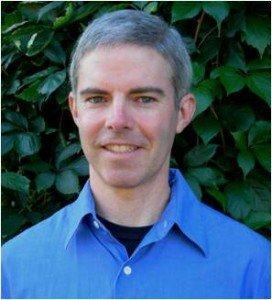 Rob Dietz brings a fresh perspective to the discussion of economics and environmental sustainability. His diverse background in economics, environmental science and engineering, and conservation biology (plus his work in the public, private, and nonprofit sectors) has given him an unusual ability to connect the dots when it comes to the topic of sustainability. Rob is the author, with Dan O’Neill, of Enough Is Enough: Building a Sustainable Economy in a World of Finite Resources.
Rob Dietz brings a fresh perspective to the discussion of economics and environmental sustainability. His diverse background in economics, environmental science and engineering, and conservation biology (plus his work in the public, private, and nonprofit sectors) has given him an unusual ability to connect the dots when it comes to the topic of sustainability. Rob is the author, with Dan O’Neill, of Enough Is Enough: Building a Sustainable Economy in a World of Finite Resources.

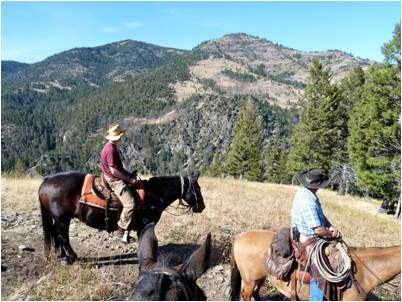
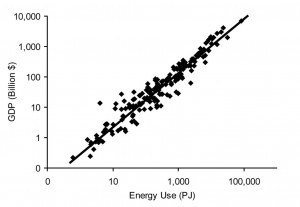
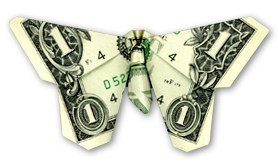
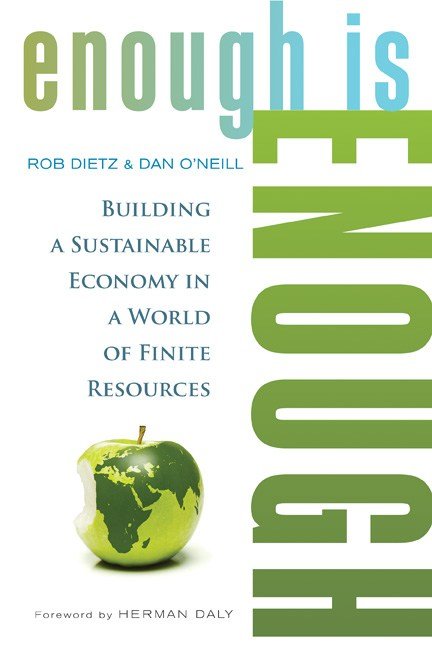
Great post, Rob. Many people on the growth-seeking hamsterwheel can’t get off long enough to imagine what a world without growth-obsession would look and feel like. This will help!
Dave Gardner
Producing the documentary,
GrowthBusters: Hooked on Growth
http://www.growthbusters.org
Very nice. I love the sound of this. But I get the impression there’s room for expansion still in how A (steady state economy) leads to B (this fulfilling account). Believe me I love the sound of it but I suspect that without more work on the explanation it’s likely to be dismissed by many as hairy, lefty, hippy shite!
Tell me: When were the capitalists overthrown?
Talk til you’re blue in the face about culture and “consumption as happiness” and being “hooked on growth.”
Our business-based overclass is never going to permit a steady-state economy to be seriously discussed, let alone implemented.
My life is pretty much like that, except I don’t get paid.
I would prefer to believe your scenario than Cormac McCarthy’s, though I suspect McCarthy is closer to the real human condition. As Michael says it will not be permitted because billionaires will not accept less without a fight and they own the armies.
Sounds good, if improbable. But in the back of my mind whenever I read the many suggestions about managing our near future I see a Cartesian graph with time, starting about the year 1000, along the X axis and both population and energy use along the Y. The curves are so close as to be nearly a single line. Absent some as yet undeveloped, indeed undiscovered, source of energy, will the population not have to decline to a level similar to before the fossil fuels era? Or perhaps lower, given the environmental damage already done and not taking into account that which may be done in the energy struggles to come. Cormac McCarthy et al sound like being right to me.
I really liked this piece of speculative fiction. I hope you’ll consider expanding it in the future.
Onwards to the steady state!